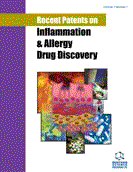Abstract
Targeting cell surface antigens or receptors with lytic monoclonal antibodies and specific ligand-directed fusion proteins in order to eliminate cancer cells has been in development for at least forty years. More recently, leukocyte populations known to drive a host of allergic, autoimmune and inflammatory diseases have been targeted. For fusion protein constructs, a number of different classes of cellular toxins have been fused to a variety of ligands such as monoclonal antibodies, growth factors and cytokines. Although there has been great clinical success using these biologics, there are some limitations. The target antigens are often expressed on normal cells leading to side effects. More recently, several groups have explored the use of chemokine receptor ligands and antibodies to target leukocytes and cancer cells. There are a number of inducible chemokine receptors that are only up-regulated in inflammation and their expression is relatively restricted to pathological cells. This confers another degree of specificity on biologics that are composed of chemokine receptor targeting agents. This review discusses articles, recent patents and patent applications that explore the selective depletion of pathological cells by targeting chemokine receptors with chemokine ligands, monoclonal antibodies and different bispecific constructs as a therapeutic strategy for allergic, autoimmune and inflammatory diseases.
Keywords: Chemokine, fusion protein, monoclonal antibody, immunotoxin, allergic, autoimmune, inflammation, cancer, bispecific antibodies, ribosome inactivating protein
 10
10


















